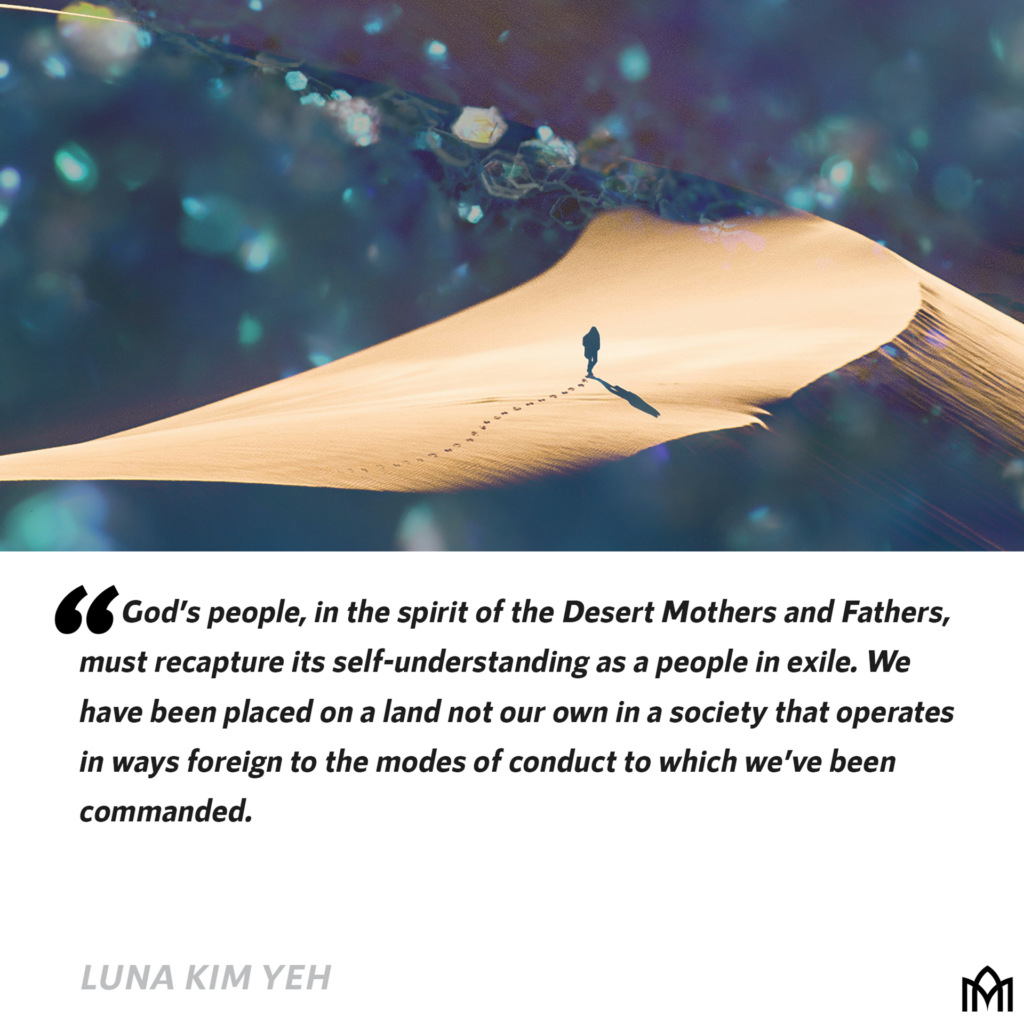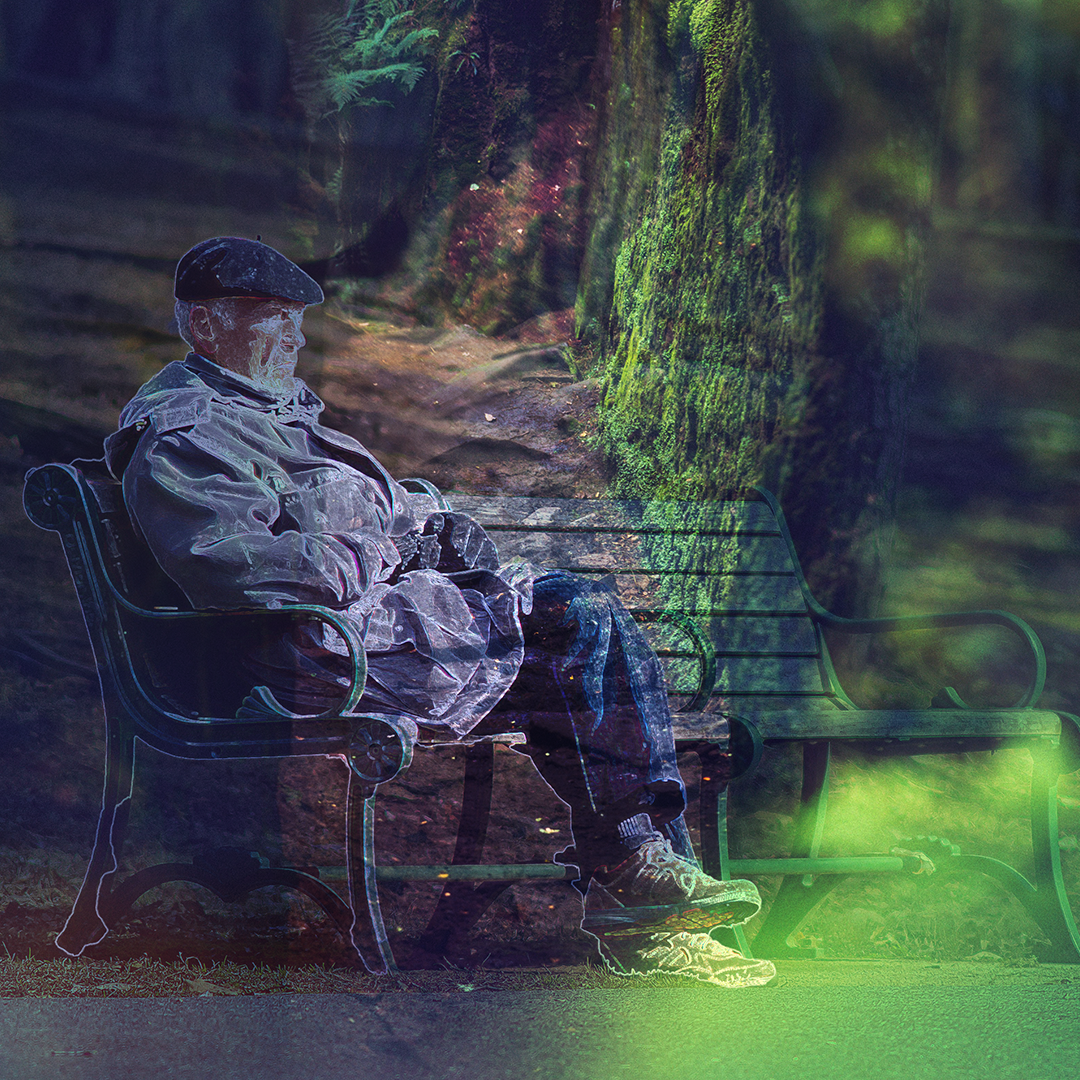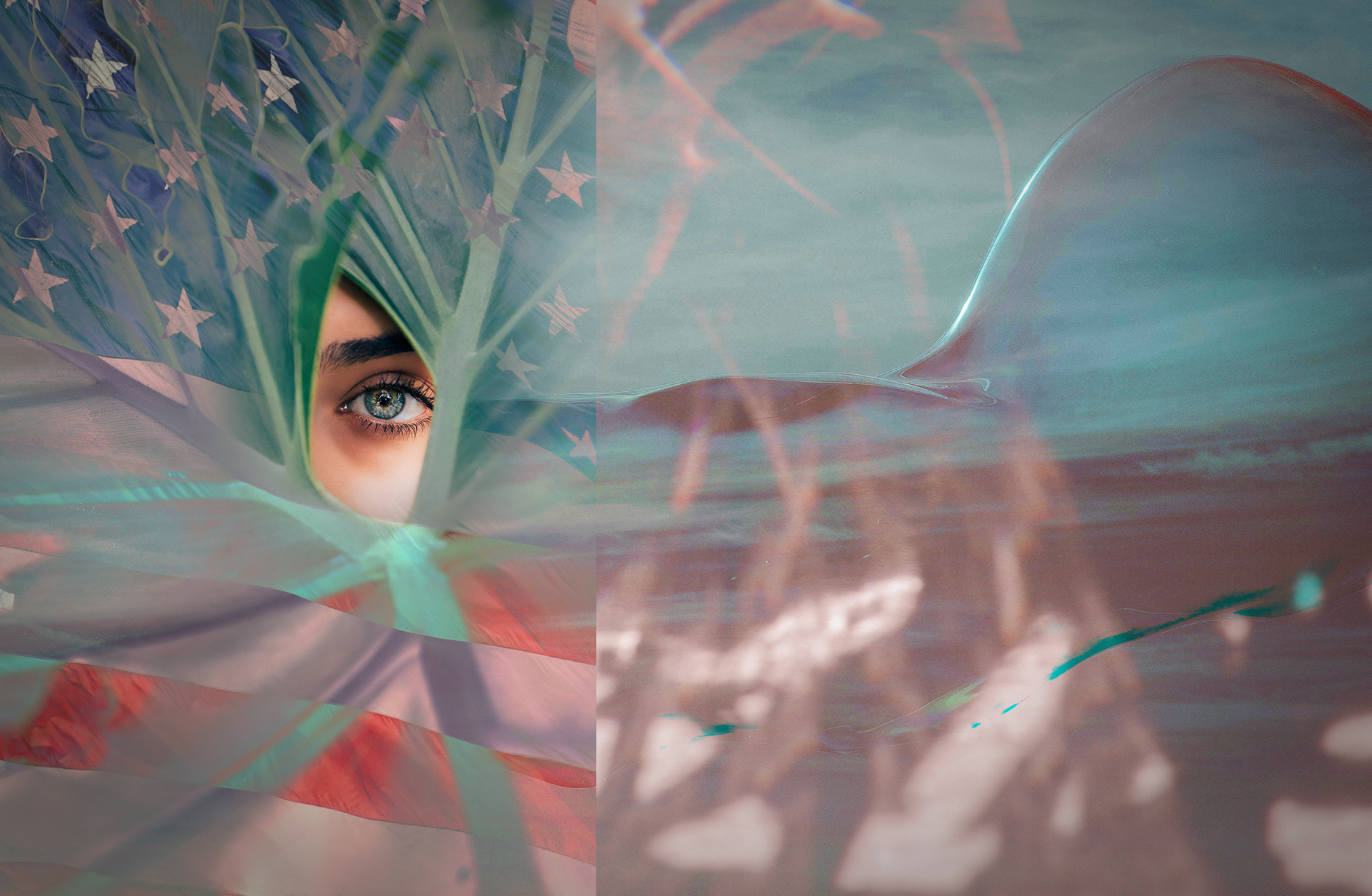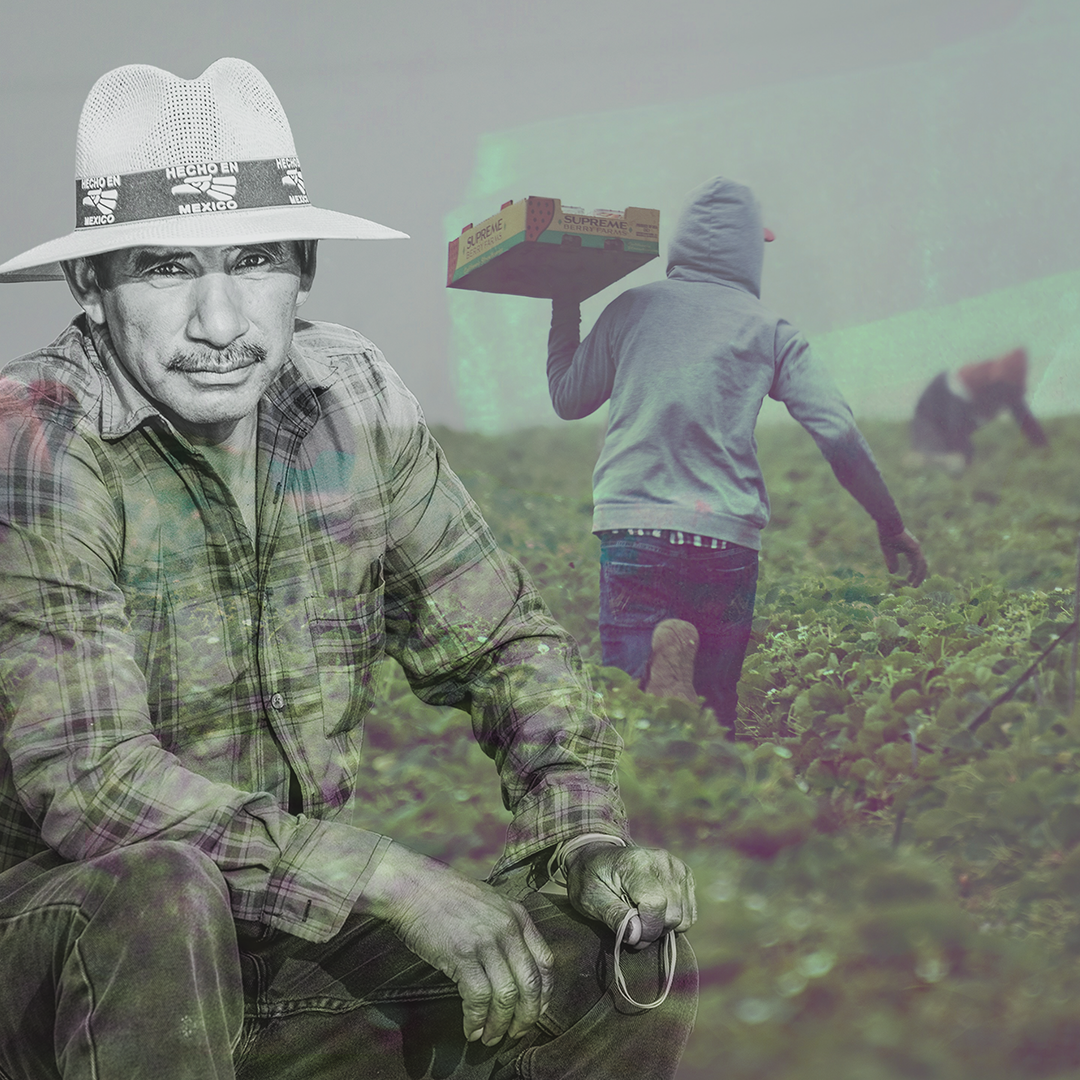Maroon Church: Desert Wisdom for Fugitive Worlds
“They regarded society as a shipwreck from which each had to swim for their life. They believed that to let oneself drift along, passively accepting the tenets and values of what they knew as society, was purely and simply a disaster.” (Thomas Merton, The Wisdom of the Desert: Sayings from the Desert Fathers of the Fourth Century)
“To have been shipped is to have been moved by others, with others. It is to feel at home with the homeless, at ease with the fugitive, at peace with the pursued, at rest with the ones who consent not to be one.” (Fred Moten and Stefano Harney, The Undercommons: Fugitive Planning & Black Study)
Where is the social location of God’s people today? Deep reflection on this vital question prompts us to look squarely at the historical role Christianity has played in religious, political, and human geographies. What has the American church enacted in the ongoing narrative of racial and carceral capitalism, particularly in the wake of its forebear, racial slavery?
The harsh reality is that the landscape and practice of American religion today, in its whiteness and Blackness, bear not only scars, but festering wounds of these histories. The truly damnable aspect of our religious heritage (primarily for Christians) is that the dreams of colonial conquest and racialized capitalism have not only been enmeshed in the project of Christian mission in the Americas, they were actually largely predicated on religious justification and intention. As Indigenous, Black, and Brown bodies have been historically subjugated, defined, and domesticated into political and economic commodities, Christians in America have, more often than not, stood idly by, if not outright led the charge, in spiritualizing, rationalizing, and funding the entire project. Our very conception of what we know to be American “history” is shot through with knowledge forged in the hellish fires of these racialized religious dreams. It is with this formative outlook that today’s church continues to blindly perform and support the societal workings of racial and carceral captivity.
What are we to do with this knowledge?
Specifically, what is a redeemed role for religion that economically benefits from a world that turns on extractive accumulation on the one hand, yet is actively engineered against its possibility for others? These realities apocalyptically reveal to us that perhaps we are not capable of an imagination required for the reformation and reversal of such an extractive, planetary endeavor. If knowledge itself is built on foundational assumptions pertaining to personhood, ownership, property, upward mobility, self-sufficiency, and racial/gendered hierarchies that unconsciously trends toward what are considered to be normative conceptions of humanity, then there must be alternative knowledges that allow each of these everyday concepts to take on completely inverted meanings. When one’s person becomes property, when one’s body is owned, when one’s very womb becomes a shipping container in service of an extractive and dehumanizing economics, then correspondingly, one’s perspective of such categorizations is irrevocably skewed, never again to feel morally neutral.
As Indigenous, Black, and Brown bodies have been historically subjugated, defined, and domesticated into political and economic commodities, Christians in America have, more often than not, stood idly by. Share on X
How then, can such fugitive knowledge be enfleshed and enacted?
May we submit that this work begins with the understanding that the role of God’s people in this narrative is not as Savior. Our presumptions towards a collective embodiment of God’s presence and will must be tempered by the realities of our frail bodies as broken vessels. That is, a fiercely truthful acknowledgement of our overdetermined sanctification attained in part by the desert wisdom of an “undercommon inheritance of another world.”1Moten, F. (2013). “Blackness and Nothingness (Mysticism in the Flesh).” The South Atlantic Quarterly 112:4, Fall. Duke University Press. This reality would repudiate any assumption of the inherent goodness and virtue of religious institutions, misshapen as they are by racial and colonial logics.
Rather, God’s people, in the spirit of the Desert Mothers and Fathers, must recapture its self-understanding as a people in exile. We have been placed on a land not our own in a society that operates in ways foreign to the modes of conduct to which we’ve been commanded. In short, if this age is colored through and through by white supremacy and economic greed, then it is the responsibility of God’s people to align interests and gain understanding from the exiles and fugitives of this age. This is religion in the key of Blackness – a church of the maroons.
From the outset, we should be clear that we are not necessarily talking about “Black Church” and “White Church,” as defined by racial demographics. Rather, we are concerned with the performance of dominant and subdominant modes of discipleship and practice. Do God’s people perform as masters of their domain or do they perform fugitivity, fleeing a shipwrecked world and on the run? It is perhaps the most tragic dimension of the American psyche of persons of color, wherein Black and Brown churches perform the roles of presumed dominance through frames of structurally white heteropatriarchal norms and institutional regulations and controls. In contrast, there are churches composed of predominantly white congregants who have aligned themselves with the primary interests of the criminal, the prisoner, the houseless, the unemployed, those treading water and those “on the run.”
It is in this sense that what could be called “maroon theology” provides an analogue to the exilic social location of the Christian. How does stealing away or escaping from racial slavery and extractive modes of capitalism echo the geographical shape and practice of “fleeing” as advocated by the Desert Fathers and Mothers in the monastic tradition? This is an entirely different basis and foundation for economic self-sufficiency, one that flows out of concerns for community liberation in a key of an anarchic blackness. Against privileged modes of institutional critique and reform, maroon church is essentially a liberative world-building project: The enactment of a spirit-enflamed society forged within the dead shell of the incumbent.
God’s people, in the spirit of the Desert Mothers and Fathers, must recapture its self-understanding as a people in exile. (1/3) Share on X
We have been placed on a land not our own in a society that operates in ways foreign to the modes of conduct to which we’ve been commanded. (2/3) Share on X
In short, if this age is colored through and through by white supremacy and economic greed, then it is the responsibility of God’s people to align interests and gain understanding from the exiles and fugitives of this age. (3/3) Share on X
In her excellent new book on maroon geographies,2Winston, C. (2023). How to Lose the Hounds: Maroon Geographies and a World Beyond Policing. Duke University Press. Celeste Winston defines marronage as “a fundamentally spatial practice of building alternative worlds in service of liberation.”3iBid, Winston, 30. As such, cultivating community entails overturning the grounds so as to prepare it to receive the seeds of desert wisdom that have germinated the Black Church in America. This church, forged in the fires of marronage, is paradigmatic for a distinctly “desertized” American church in a key of liberation.
Winston elaborates on how these historically “unincorporated communities…built their own community institutions, including churches, schools, and lodges…[C]hurches functioned at the intersection of these roles, serving as a religious institution, a site of children’s education, and a meeting place for benefit societies and other organized groups.”4iBid, Winston, 31. She goes on, “As the heart of Black communities, churches expressed the community’s moral standards…[and] provided a means to meet Black people’s everyday needs.”5iBid, Winston, 31. We cannot articulate a better description of what we hope for communities of faith today, regardless of race, ethnic identity, or religion.
This conjuring of desert spirituality and geographies of flight are in no way meant to imply any sort of static resignation to the murderous ways of the world. The evocation of an enclave society is more than simply an imaginative signpost signaling a fantasy world-to-come. Rather, in contrast to utopian notions of separatism or isolationism, Winston describes for us maroon geographies of Black flight – swamps, thickets, forest, marshland, and other difficult, abandoned, non-productive, and isolated terrains. She elaborates a “fugitive infrastructure” that, according to Saidiya Hartman, is animated by “the determination to live free, the beauty that propels the experiments in living otherwise…a way of creating possibility in the space of enclosure, a radical art of subsistence, an embrace of our terribleness, a transfiguration of the given.”6Hartman, S. (2019). Wayward Lives, Beautiful Experiments: Intimate Histories of Riotous Black Girls, Troublesome Women, and Queer Radicals. W. W. Norton and Company. It is, as Alexis Pauline Gumbs defines it, a sort of human technology: “the brilliance of making something out of anything, of making what we need out of what we had.”7Gumbs, A. P. (2015). “Evidence.” In Octavia’s Brood: Science Fiction Stories from Social Justice Movements. Edited by Adrienne Marie Brown and Walidah Imarisha. AK Press. It is the everyday enfleshment of what Halyna Herasym calls “social dreaming.”8See https://independentleft.ie/voices-of-resistance/ for more on Herasym’s provocative phrase. It is Fred Moten’s seaborne sociality,9Wang, J. (2020). Oceanic Feeling & Communist Affect (zine). Friendship as a Form of Life. what Frank Wilderson III refers to as “fantasy in the hold.”10Wilderson, F. B. III. (2010). Red, White, and Black: Cinema and the Structure of U.S. Antagonisms. Duke University Press.
What the Black church in America bears witness to is a way out of no way in the midst of social death — a Blackness that society deems as nothingness. What the Desert Mothers and Fathers show us is the way of spirituality that Merton describes as “very sensitive to the landmarks of a trackless wilderness…[a] simple nowhereness…in the possession of a sublime ‘Nothing’, those who did not believe in letting themselves be passively guided and ruled by a decadent state, and who believed that there was a way of getting along without slavish dependence on accepted, conventional values.”11Merton, T. (trans.). (1960). The Wisdom of the Desert: Sayings from the Desert Fathers of the Fourth Century. New Directions. Yet this flight, this ancient marronage, this desperate escape from death, was fundamentally fueled by an undying hope for liberation, and not just for the fugitives themselves, but for the freedoms of a new world forged otherwise.
The wisdom of both the desert and the maroons is that in fleeing “the world [where] men were divided into those who were successful, and imposed their will on others, and those who had to give in and be imposed upon,”12iBid, Merton. the very possibilities of a faith forged in the fires of freedom might take flight.
///
Against privileged modes of institutional critique and reform, maroon church is essentially a liberative world-building project: The enactment of a spirit-enflamed society forged within the dead shell of the incumbent. Share on X
*Editorial Note: Luna Kim Yeh is both Joshua’s pen name and birth name, which is why you see both names appearing within this piece. ~CK




